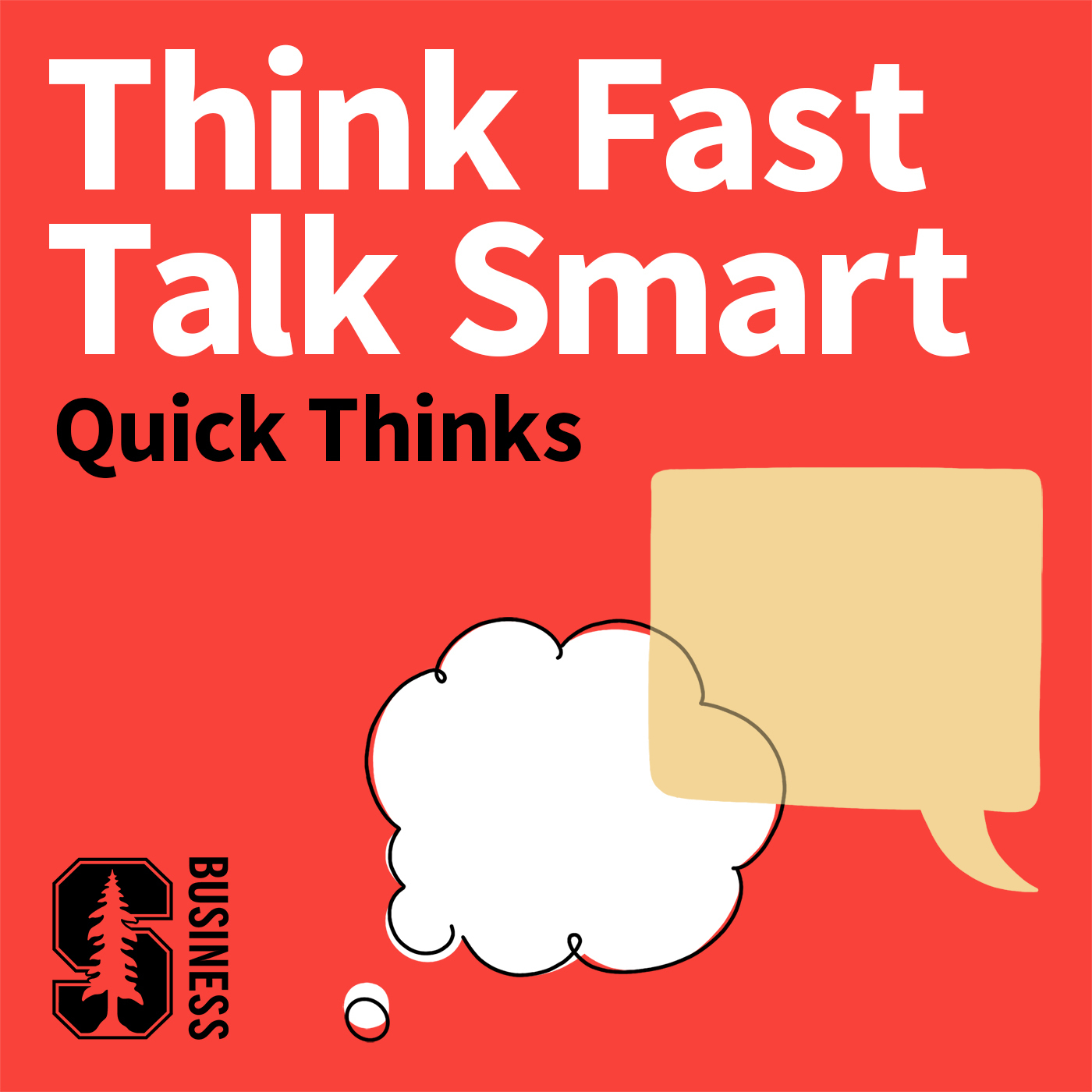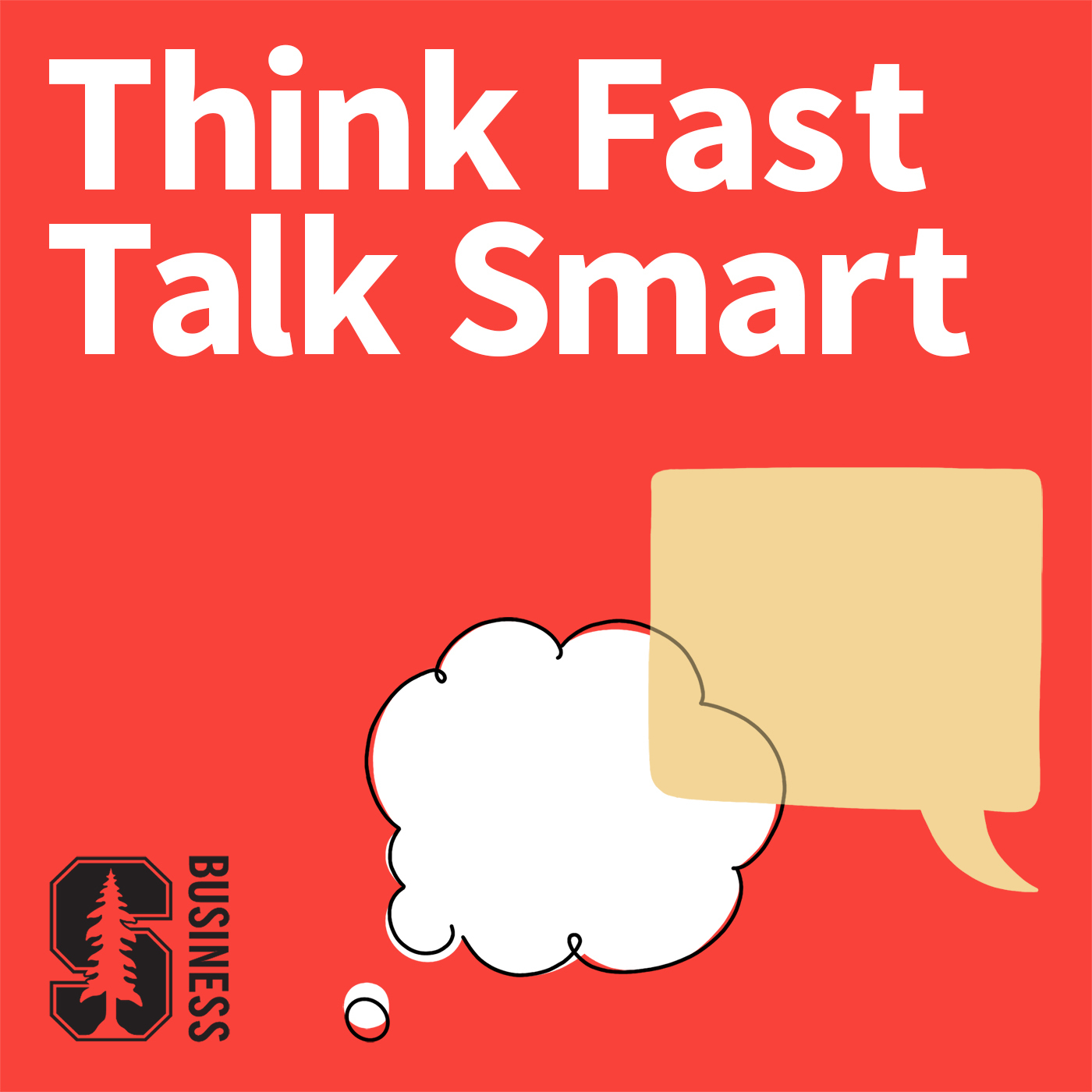
7. Quick Think: Use This Framework to Speak up in Virtual Meetings

Think Fast, Talk Smart: Communication Techniques
Deep Dive
Shownotes Transcript
Hi, Matt here. I invite you to look into Stanford Continuing Studies. For over 20 years, I have taught in the program. Discover a diverse range of courses available both online and in person to anyone, anywhere in the world. Classes cover everything from fundamental business skills to the fascinating world of AI. This fall, join me for Communication Essentials for Work and Life, a new course designed to enhance and hone your communication skills in various situations.
Each week, guest speakers will join me for interactive lectures and Q&A sessions on topics like persuasion, storytelling, nonverbal presence, and reputation management. The course starts September 24th, and registration is now open. Learn more at continuingstudies.stanford.edu.
We've all been in the situation where you have something important to contribute to a meeting or a presentation and you just don't know how to insert your thought. How do I get my idea out there? And once I do, how do I make it clear and concise? Today, I will explore specific techniques and tips you can use to be more effective when you need to contribute your ideas in a presentation or a meeting.
My name is Matt Abrahams and I teach strategic communication at Stanford Graduate School of Business. And welcome to a Quick Thinks episode of Think Fast, Talk Smart, the podcast.
Based on the work I have done as a lecturer at the GSB, as well as in my consulting practice, there are some specific techniques and tools you can use to insert your ideas in a conversation, a meeting, or even a presentation. The three best tools that I am aware of are to start with a paraphrase. When somebody is speaking and you want to contribute, you can simply interject a paraphrase, capture something that they have said,
It doesn't have to be a grand paraphrase where you say, so what you're saying is, you could just jump on a particular topic like pricing and then start sharing your point of view. Paraphrasing is a polite way to get your point into a conversation or into a meeting. Another tool is to simply ask a question. So as somebody is speaking, you might say, I have a question about that point.
And that question can be one where it's presented in a polite, concerned way, or perhaps in a more direct way. So tone matters. The final way is to simply start with an emotion. That concerns me, or I'm excited by.
that emotion gives you permission to then follow up. So by paraphrasing, asking a question, or stating an emotion, you can get the floor in an in-person or virtual communication situation.
Now once you have that floor, you have to contribute. And we know from our own personal experience that if we are unstructured, meandering and wandering, that people aren't going to really take away what we want them to. We must be clear and concise. And the way we become clear and concise is by using some kind of message design or structure. And there are many, many that exist. Structure gives us a place to start and a place to end. It helps us connect our ideas together.
My favorite structure for making contributions in meetings, in conversation and presentations is simply three questions. What, so what, now what? This gives you the guide, the map, if you will, for what it is you need to say. You start with the what. What is it you're talking about? It could be a process, a product, an idea, a point of view.
The so what is why is it important to the people you're speaking to, perhaps to the company or even society at large? And then the now what is what you want to have come next. It could be action items, a follow up meeting, a demonstration, but it is the action that follows.
What, so what, now what is a super powerful structure that upon practicing and becoming comfortable with it can really help you structure your messages so that they are packaged well for your audience to understand. I encourage you to take these tools for inserting your ideas as well as the notion of message design through structure to help you be more effective in your communication.
Hi, Matt here. Quick question for you. When was the last time you took a step back from your daily life and took the time to invest in yourself and your education?
For a lot of us, it's been a long while. But here's the truth. Great leaders never stop learning. If this sounds like you, I encourage you to explore Stanford Executive Education Programs. These programs are jam-packed with insights from Stanford GSB professors and bring together top leaders like you from all around the globe.
Explore Stanford Executive Education programs now at grow.stanford.edu/learn.